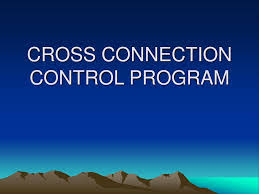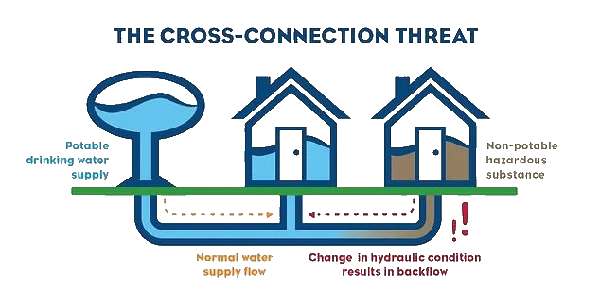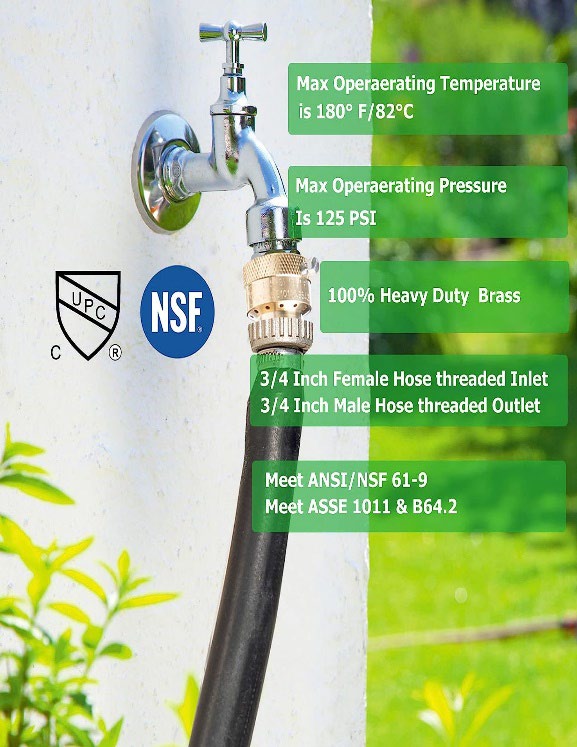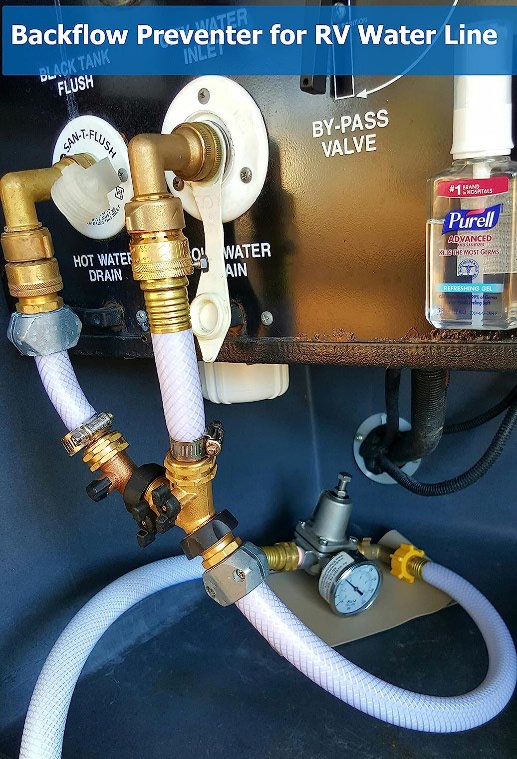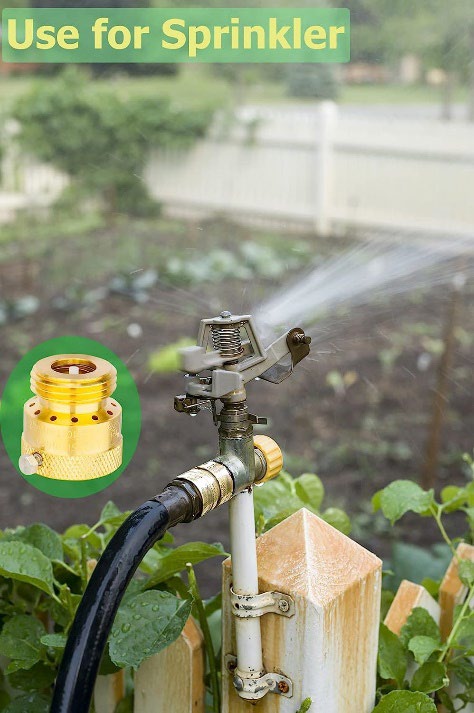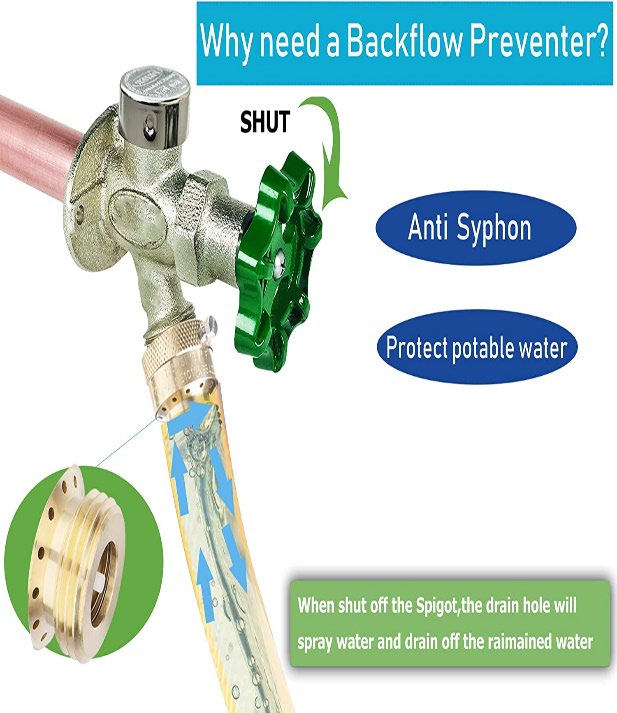Cape Carancahua Water Supply Corporation’s Cross-Connection Control Program (CCCP) strives to maintain the quality of water provided to all our customers by reducing the risk of contamination and or pollutants of the Cape Carancahua WSC public water system. To accomplish this, the CCCP works to ensure that proper backflow prevention is set in place and maintained as required by state and local regulations for all cross-connections. The program conducts investigations at residents/facilities where potential cross-connection hazards exist, educates the public about cross connection control, and enforces state and uniform plumbing code requirements regarding backflow prevention. The program requires the installation, maintenance, and annual testing of backflow prevention assemblies on cross connections or for proper air gaps to be in place to eliminate cross connections.
What is a Cross-Connection?
A cross-connection is a link that can either be direct or indirect between potable and non-potable water/plumbing systems. Contaminants and pollutants can enter the drinking water supply through cross connections when a backflow event occurs affecting the drinking water quality and presenting a serious threat to public health. Some cross connections can be eliminated through an air gap between potable water and non-potable water systems, but some connections can be inevitable. In situations where cross connections must exist, backflow prevention assemblies must be installed and maintained to protect from hazards entering the location's plumbing and the public drinking water supply. The type of hazard at hand will determine the type of backflow prevention assembly required to be installed. To learn more about cross connection control, its hazards, and the requirements for backflow prevention assemblies, click on the following links and see documents below.
Your Role as a Water Customer
By taking steps to control cross-connections and prevent the possibility of backflow at your home, you will help to protect the public water supply and ensure that your family continues to enjoy safe drinking water. Garden hoses and irrigation systems are common concerns, but there are other common residential sources of cross connections, too.
Garden Hoses and Backflow
The garden hose is the most common cross connection. Each of these common uses of a garden hose sets up a cross connection:
- forcing it into a clogged gutter, downspout, or sewer pipe to flush out the clog
- connecting it directly to a hose-end sprayer to apply pesticide or fertilizer to your yard
- connecting it to a soap-and-brush attachment to wash your car, boat, or siding
- letting the end of the hose lie in a puddle or pool of water on the ground
- letting the end of the hose be submerged in a swimming pool
No doubt you can think of other examples. In each of these cases, if backflow happens, your household’s water lines could be contaminated. Depending on how long the backflow event lasts, the contamination could spread to the public drinking water system. Fortunately, there are two inexpensive ways to solve this problem:
- Make sure that the end of your garden hose is never submerged in or connected to a non-potable substance. This solution is free, but not highly reliable. Can you always be this careful?
- Install a hose bibb vacuum breaker on each of your outside faucets. These inexpensive devices are designed to allow water to flow in only one direction. You can find them at most home supply stores and through plumbing suppliers. Before you use a hose-end sprayer, you should first install a hose bibb vacuum breaker at the faucet.
Irrigation Systems and Backflow
As a homeowner, you may install and maintain your own irrigation system, but it’s still important to have a suitable backflow prevention assembly (BPA) in place and to be sure that it works properly. Here are a few ways you can do just that:
- Hire a licensed irrigator. You can find one from our online licensing database.
- If you install your own system, have a licensed BPA tester confirm that the BPA is installed and operating properly. Licensed BPA testers are also listed in our online licensing database.
- TCEQ requires you to have a licensed BPA tester check the BPA when it is installed on your irrigation system. Your water provider may have adopted additional codes or regulations which require an annual test of the BPA on your irrigation system.
For more information see TCEQ's regulations for irrigation systems, or contact TCEQ's Landscape Irrigation Program at 512-239-LAWN.
CCWSC water customers are required to have the proper backflow protection depending on the severity of the hazard. All cross-connections must have the proper backflow prevention assemblies installed and properly maintained. State Rules and Regulations and Plumbing Code, mandate testing the backflow preventer assemblies at the time of installation, repair, relocation, and annually thereafter. This is the responsibility of the water customer.
Your Water System’s Role
Your water system’s role begins with good system maintenance and sound operations. By replacing pipes before they break, taking steps to ensure that system pressures do not fall during periods of high demand, and asking for the cooperation of customers when there is a risk that system pressures could fall below safe levels, your public water system operator reduces the risk of backflow.
Many public water systems also operate rigorous cross-connection control (CCC) programs of their own. They identify locations where the risk of cross connection is high and ensure that the proper measures are taken to minimize that risk.
Another aspect of an effective CCC program is the customer service inspection (CSI). Your public water system must require a CSI to be performed under the following circumstances:
- All new construction.
- Existing customers that have had substantial plumbing modifications.
- Existing customers whenever there is a reason to suspect that a hazard or a source of contamination may be present.
Water providers notify their customers that a CSI is required. Some public water systems have licensed staff who perform the CSIs and then bill the customer for the inspection. Other public water systems require the customer to hire a licensed person to conduct the CSI. The following individuals are authorized to perform CSIs:
- A TCEQ-licensed Customer Service Inspector.
- A Texas State Board of Plumbing Examiners (TSBPE) licensed Plumbing Inspector.
- A TSBPE-licensed plumber with a Water Supply Protection Specialist endorsement.
Our Occupational Licensing Section licenses Customer Service Inspectors and maintains a database of licensed Customer Service Inspectors.
Cross-Connection Control and Backflow Prevention
The TCEQ’s Role in Cross-Connection Control and Backflow Prevention
We require water providers to meet standards to obtain, treat, and deliver water. A public water system’s Cross-Connection Control Program is inspected during routine investigations made by our regional staff. Technical assistance in the area of cross-connection control is offered to public water systems by staff from our central office.
Plan Review and Inspection Tools
Below are documents for customers to use with a licensed Backflow Preventer Assembly Tester to install and annually inspect irrigation systems backflow prevention devices. Customer Service Inspection form is to be used by a licensed Customer Service Inspector for inspecting new builds, plumbing remodels and if a hazard is detected that needs to be inspected.
*BPT and CSI forms are subject to change by TCEQ, please make sure you have the latest revised form date before using the forms.


